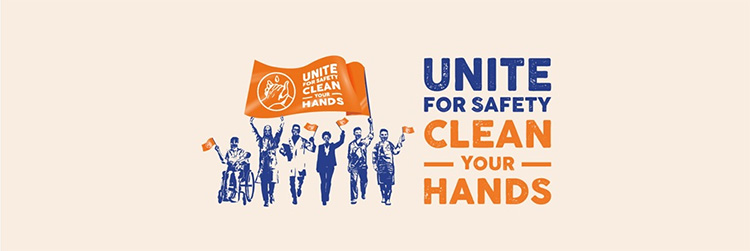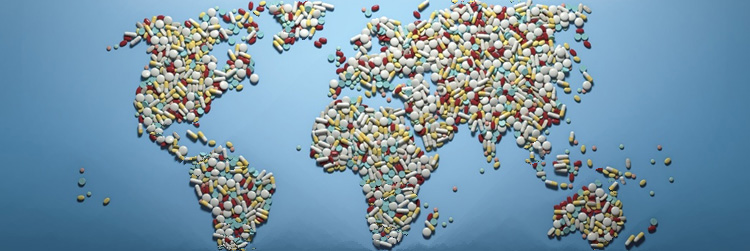World Health Assembly resolution entitled “Global action on patient safety” (WHA72.6) gave priority to patient safety as an essential foundational step in building, designing, operating and evaluating the performance of all health care systems. The adoption of this resolution was a remarkable milestone in global efforts to take concerted action on patient safety and reduce the burden of patient harm due to unsafe health care.
WHO launched a Flagship Initiative A Decade of Patient Safety 2020–2030 in February 2020. This important step defines WHO’s contribution to the global patient safety movement. Through its year-by-year milestones, it will be the driver for the successful implementation of the Global Patient Safety Action Plan 2021–2030.
World Hand Hygiene Day

Celebrated every year on 5 May, Hand Hygiene Day mobilizes people around the world to increase adherence to hand hygiene in health care facilities, thus protecting health care workers and patients from infections.
World Patient Safety Day

World Patient Safety Day, which is marked every year on 17 September, was established by the 72nd World Health Assembly in May 2019, following adoption of resolution WHA72.6 on ‘Global action on patient safety’. The resolution recognizes patient safety as a global health priority and promotes increasing public awareness and engagement, enhancing global understanding, and spurring global solidarity and action to progress patient safety. World Patient Safety Day builds on a series of successful annual Global Ministerial Summits on Patient Safety, which started in London in 2016.
National quality policy and strategy
Many countries are making efforts to improve quality of care and institutionalize a culture of quality across their health system. These efforts can be strengthened through the development of a national quality policy and strategy to support countries develop improvement plans and a distinct national direction on quality in health system performance. With WHO support, Member States can navigate the process of creating and institutionalizing a national quality policy and strategy to address quality intervention and enhance health system performance.
A national quality policy and strategy is an organized effort by a country to promote and plan for improved quality of care. It will often be outlined in a document, providing an official, explicit statement of the approach and actions required to enhance the quality of health care across a country’s health system, and needs to be linked closely with the wider national health policy and planning process. Responsibility for the development of such documents is commonly held by the ministry of health, working in close collaboration with a range of policy-makers and other stakeholders.
Experiences from countries with national quality policies and strategies have highlighted the benefits of one coherent plan that provides guidance and direction on quality at all levels of the system. However, quality-related policies exist within the context of wider national governance arrangements. National quality policies and strategies can help clarify the linkages with national health – and non-health – policies, plans and priorities, highlight the importance of quality-focused processes in realizing overall health priorities, and define lines of accountability to work towards more people-centred health services.
The 8 elements of developing a national quality policy and strategy include:
• identifying national health goals and priorities;
• locally defining quality;
• conducting stakeholder mapping and engagement;
• conducting situational analysis to understand the state of quality;
• strengthening governance and organizational structure for quality:
• planning improvement methods and interventions;
• using health management information systems and data systems;
• establishing quality indicators and core measures.
National quality policy and strategy tools and resources compendium
https://apps.who.int/iris/rest/bitstreams/1261454/retrieve
Global Patient Safety Action Plan 2021–2030
The global patient safety action plan aims to provide Member States and other stakeholders with an action-oriented framework to facilitate the implementation of strategic patient safety interventions at all levels of health systems globally over the next 10 years (2021–2030). The guiding principles reflect the true essence of safety being based on science and centred around people. There are 7 strategic objectives giving a practical action framework that can easily be integrated in health care planning and delivery.
Global Patient Safety Action Plan 2021–2030
Global patient safety challenges
Global patient safety challenges are core initiatives by the World Alliance for Patient Safety that address significant aspects of risk to patients receiving health care. It is a global call to action for health workers, ministries of health, leaders and patients. WHO has released 3 global patient safety challenges so far.
The first WHO global patient safety challenge “Clean Care is Safer Care” was launched in 2005. to strengthen the commitment of Member States to reducing health care-associated infections (HAI) worldwide. The objectives of the first global challenge are to raise awareness regarding HAIs and to get country commitment to reduce HAIs. The major action areas to reduce HAIs are promoting hand hygiene, blood safety, injection practices and immunization, water, sanitation and waste management, as well as safer clinical procedures.
https://www.who.int/gpsc/background/en/
https://www.who.int/gpsc/clean_care_is_safer_care/en/
The second WHO Global Patient Safety Challenge “Safe Surgery Saves Lives” was launched in 2008. Surgical care has been an essential component of health care worldwide for over a century. As the incidence of traumatic injuries, cancers and cardiovascular disease continue to increase, the impact of surgical intervention on public health systems will continue to grow.
https://www.who.int/patientsafety/topics/safe-surgery/en/
The second global patient safety challenge: safe surgery saves lives
The third WHO Global Patient Safety Challenge “Medication Without Harm” was launched in 2017. Unsafe medication practices and medication errors are a leading cause of injury and avoidable harm in health care systems across the world. Multiple interventions to address the frequency and impact of medication errors have already been developed, yet their implementation is varied. A wide mobilization of stakeholders supporting sustained actions is required. “Medication Without Harm” aims to reduce severe avoidable medication-related harm by 50%, globally in the next 5 years.
https://www.who.int/patientsafety/medication-safety/en/
WHO multi-professional patient safety curriculum guide
This curriculum was developed by WHO and launched in 2011 in order to satisfy the demand for a coordinated and integrated approach in patient safety education.
In 2010, the patient safety curriculum guide was launched in Oman, where representatives from 19 countries of the Region were present. Implementation and evaluation of the curriculum was held in universities and schools in 12–14 countries worldwide. Cairo University (Egypt) and Jordan University for Sciences and Technology (Jordan) took part in its implementation.
http://www.who.int/patientsafety/education/curriculum/Curriculum_Tools/en/
Patient safety curriculum guide: multi-professional edition
Documenting the magnitude and the scope of adverse events
The WHO Regional Office is enhancing efforts to support countries conduct assessment studies on adverse events, regularly report data and collect data on adverse events, establish reliable reporting systems and encourage hospital collaboration with patient safety organizations.
The development of specific incentives might also hold hospitals more responsible to report and reduce the incidence of adverse events. Moreover, documenting adverse events also offers the opportunity to assess the impact of implemented strategies and interventions at national level.


